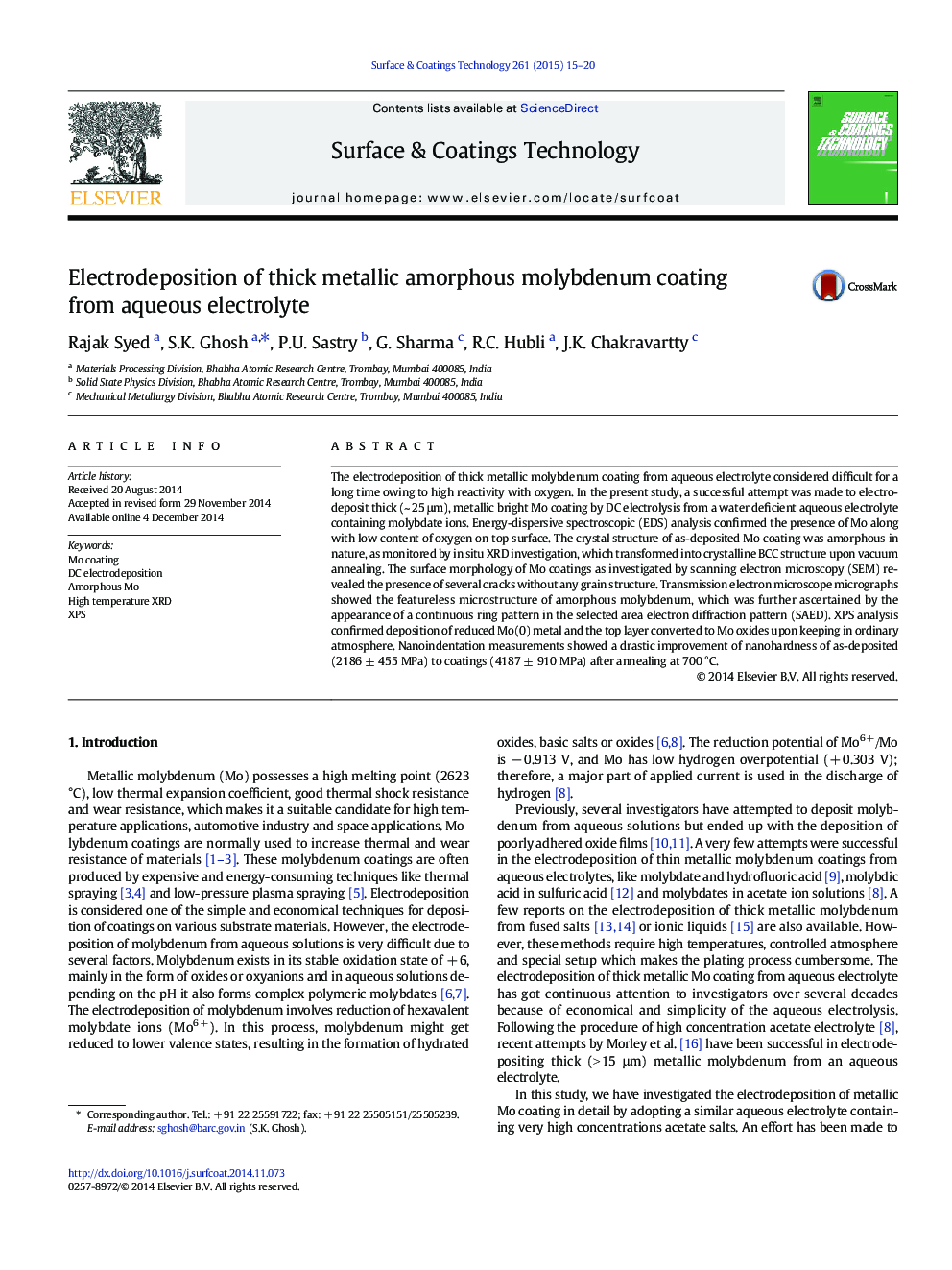| Article ID | Journal | Published Year | Pages | File Type |
|---|---|---|---|---|
| 1657280 | Surface and Coatings Technology | 2015 | 6 Pages |
•A thick (~ 25 μm), bright metallic Mo coating is deposited from aqueous electrolyte.•Nascent hydrogen assisted mechanism of formation of metallic Mo is proposed.•As-deposited Mo coating obtained is amorphous in nature.•Soft amorphous metallic Mo coating is converted to hard crystalline upon annealing.
The electrodeposition of thick metallic molybdenum coating from aqueous electrolyte considered difficult for a long time owing to high reactivity with oxygen. In the present study, a successful attempt was made to electrodeposit thick (~ 25 μm), metallic bright Mo coating by DC electrolysis from a water deficient aqueous electrolyte containing molybdate ions. Energy-dispersive spectroscopic (EDS) analysis confirmed the presence of Mo along with low content of oxygen on top surface. The crystal structure of as-deposited Mo coating was amorphous in nature, as monitored by in situ XRD investigation, which transformed into crystalline BCC structure upon vacuum annealing. The surface morphology of Mo coatings as investigated by scanning electron microscopy (SEM) revealed the presence of several cracks without any grain structure. Transmission electron microscope micrographs showed the featureless microstructure of amorphous molybdenum, which was further ascertained by the appearance of a continuous ring pattern in the selected area electron diffraction pattern (SAED). XPS analysis confirmed deposition of reduced Mo(0) metal and the top layer converted to Mo oxides upon keeping in ordinary atmosphere. Nanoindentation measurements showed a drastic improvement of nanohardness of as-deposited (2186 ± 455 MPa) to coatings (4187 ± 910 MPa) after annealing at 700 °C.
